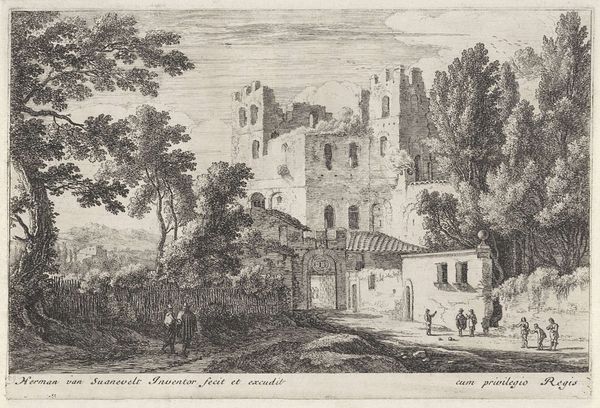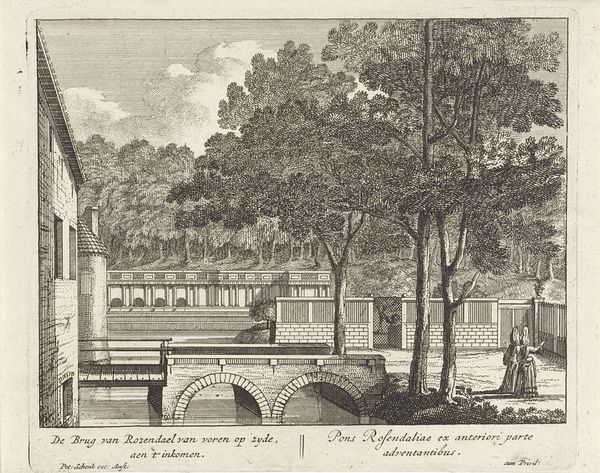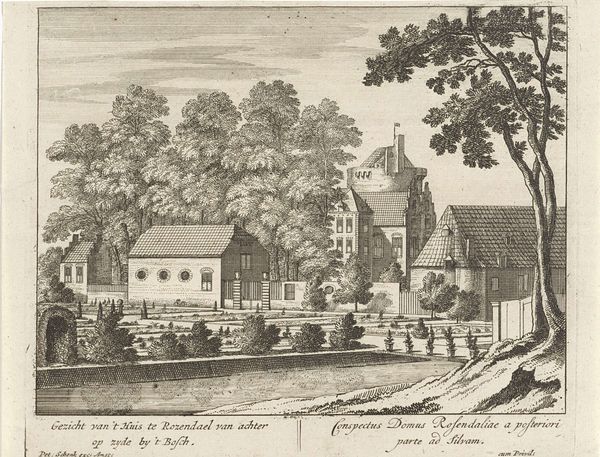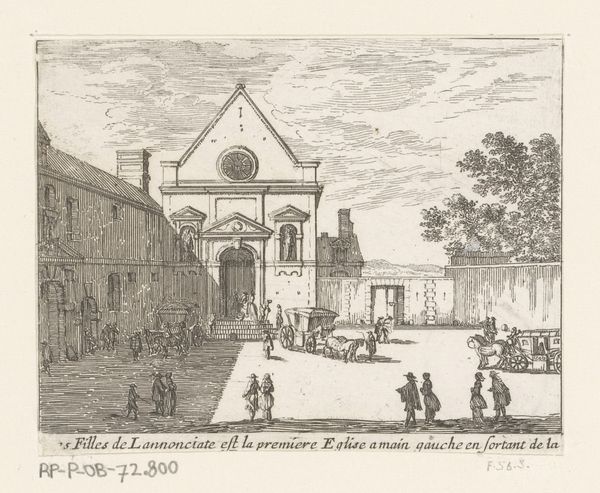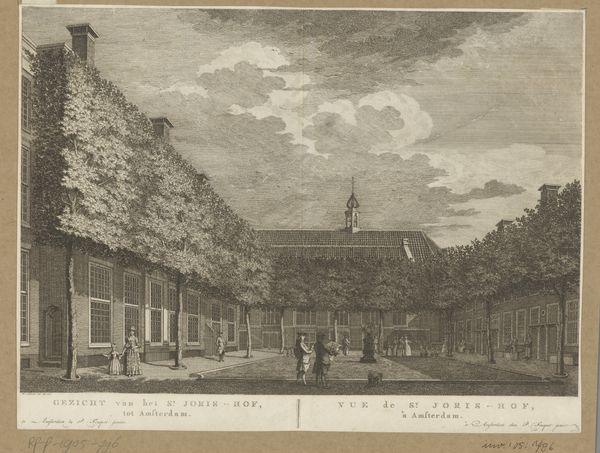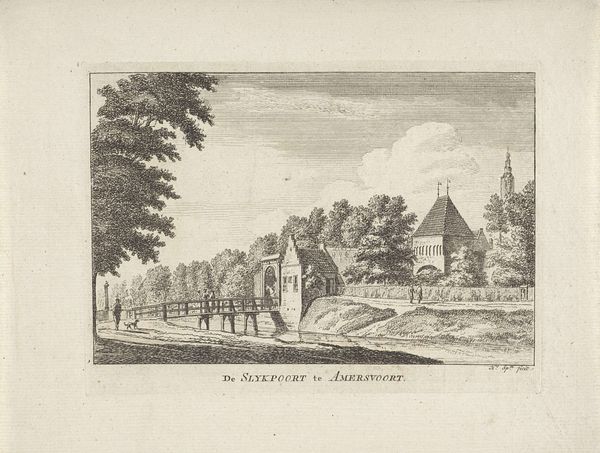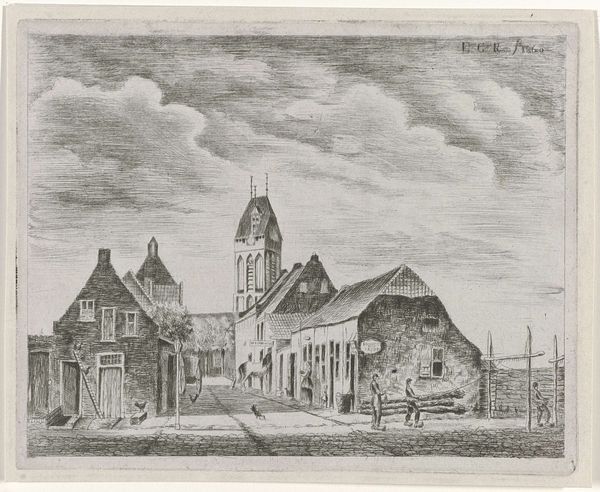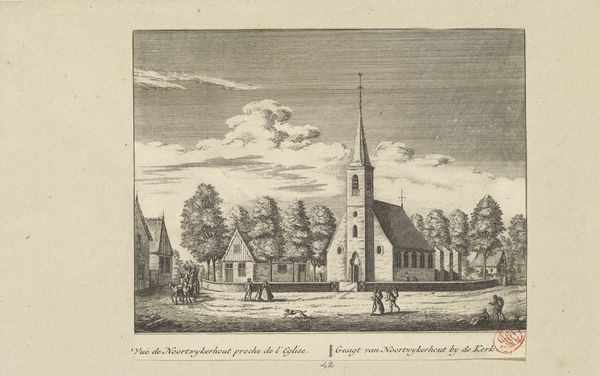
etching, architecture
#
baroque
#
etching
#
landscape
#
etching
#
history-painting
#
architecture
Dimensions: height 75 mm, width 100 mm, height 165 mm, width 110 mm
Copyright: Rijks Museum: Open Domain
Curator: Here we have Hendrik Spilman’s "View of Leeuwenhorst Abbey," created around 1750. It’s an etching, showcasing the inner courtyard. What strikes you about it? Editor: The serenity of the place despite it being a man-made construction is remarkable, and so the symmetry creates a sense of order. There's also a sort of hushed, almost melancholy mood. The light is so even and grey. It's hard to know what kind of activity would actually take place in this space. Curator: That subdued atmosphere definitely resonates. Given the abbey's history as a significant religious and social institution, Spilman’s rendering could be interpreted as a comment on power structures, don't you think? The etching became popular just after the dissolution of the monastery, of course, and so this image speaks to institutional power—how it shapes space and influences people. Editor: Absolutely, the dissolution and its popularity as a print open up a critical lens. Perhaps the evenness of light also evokes a sense of accessibility? While it definitely represents institutional space, and power, maybe it hints at how these locations relate to community identity or control. Curator: A strong point. The figures within the courtyard certainly appear diminutive compared to the architectural scale, potentially hinting at the individual's role within these imposing structures. But look at the ways in which the composition places the viewer in conversation with both architectural marvel and human vulnerability! Editor: Yes, and beyond the immediate subject of the Abbey, how can we consider its representational role? As a two-dimensional artwork representing three-dimensional space? Who was privileged enough to see, obtain, and distribute such art, and to what ends? I'm intrigued. Curator: I agree; those are important considerations. Etchings like these provide invaluable insights into the political landscape of imagery and who could claim access to what places and in what format. What does it mean to replicate this landscape, and to then be able to own or pass along the knowledge and possession of this Abbey? Editor: Definitely gives us much to unpack beyond its literal aesthetic impression. It serves to remind us of how even seemingly straightforward images of physical spaces can offer a window into much larger cultural, political and social dynamics. Curator: Precisely, Hendrik Spilman's etching prompts us to consider not only what we see but how that vision intertwines with histories of control and power. Thank you!
Comments
No comments
Be the first to comment and join the conversation on the ultimate creative platform.

